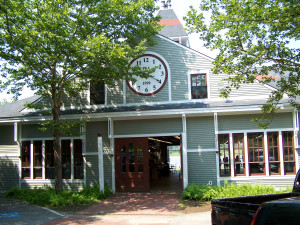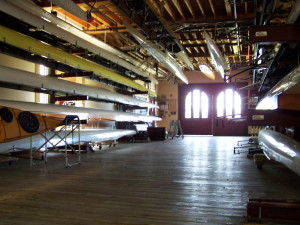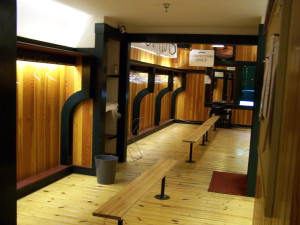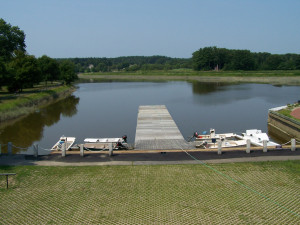Boathouse
The Saltonstall Boathouse, completed in 1990, is the sixth boathouse in the history of the Academy’s rowing program. It is named after William G. Saltonstall: oarsmen, coach and eventually the Academy’s ninth principal. Situated at the corner of Swazey Parkway and Water Street, the boathouse is only a few minutes walk from the center of campus and downtown Exeter. It stands behind the former site of the Academy Boathouse which was used from 1931 until 1989.
Built after the growth of the boy’s and girls’ crew programs in the 1970s and 1980s, the Saltonstall Boathouse is a distinctly coeducational facility. Divided into a boy’s and girls’ bay on either side of a center bay, sixteen eights, five fours, four pairs, and many singles are housed inside. Among these are five eights and one four built by Bootswerft Empacher, five eights and four fours by Vespoli USA, five eights by Schoenbrod Racing Shells (now Dirigo USA), and one eight by Resolute Racing Shells.
Sixteen Concept 2 Model C and Model D ergometers (and nine optional sliders) are shared by the crews, as well as sixteen Concept 2 DYNO strength trainers. For further training, coaches use a number of specialized “video ergs” and other video equipment. Boys and girls locker rooms equipped with showers and restrooms are located upstairs for the safety and comfort of rowers. For a more comfortable setting, the Charles Swift “Club” Room upstairs is used frequently for meetings, meals, and reviewing film from practices.
The boathouse, shells and all other equipment inside are superbly maintained under the watchful eye and skillful hands of full-time boatman, Keith Hereford. Having made many special repairs to damaged hulls as well as taken care of all the boathouse’s facilities on a day-to-day basis, Keith has proven himself a knowledgeable, encouraging and vital member of Exeter crew.
The crews row on the tidal Squamscott River, which winds its way for six miles out to Great Bay. While steering the river can be challenging for coxswains, its length allows coaches to design longer, steady-state workouts that are not possible on other bodies of water. Furthermore, the overall lack of commercial or recreational motorboat traffic prevents undesirable interruptions while on the water.



